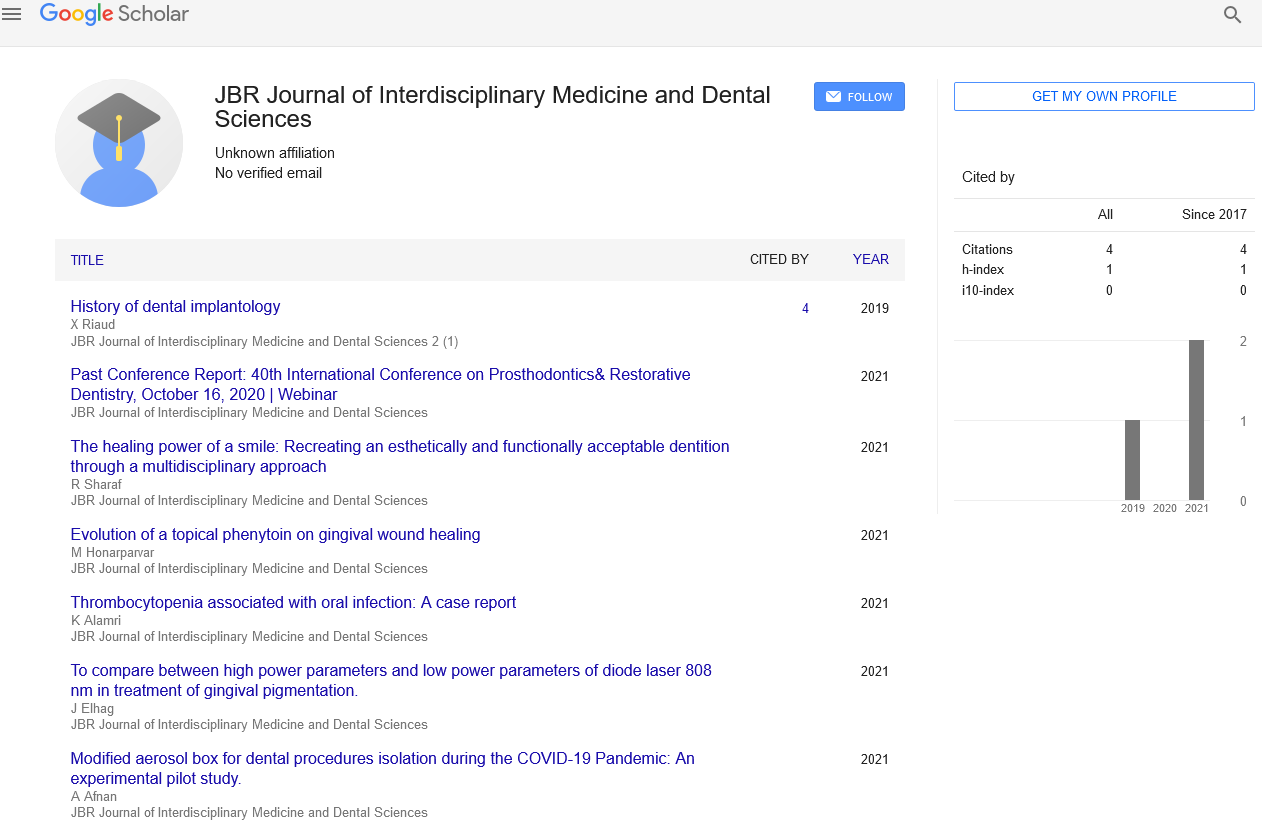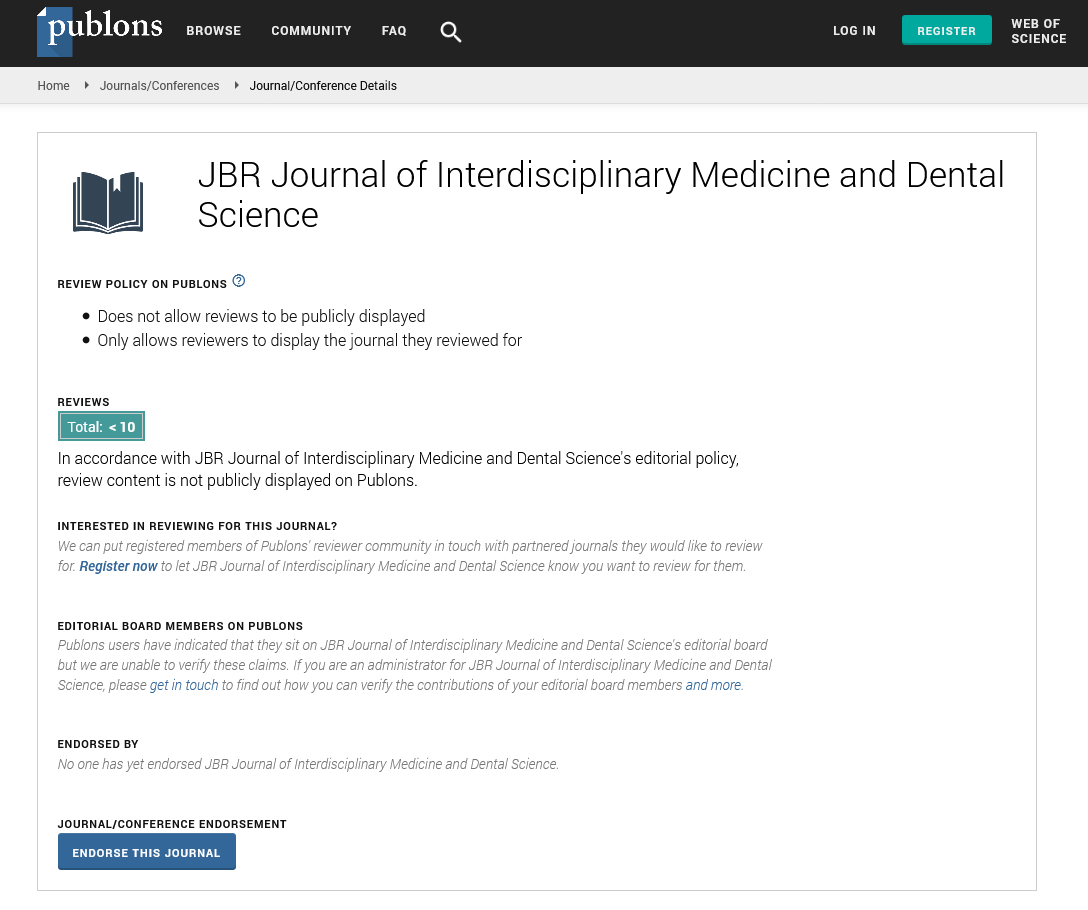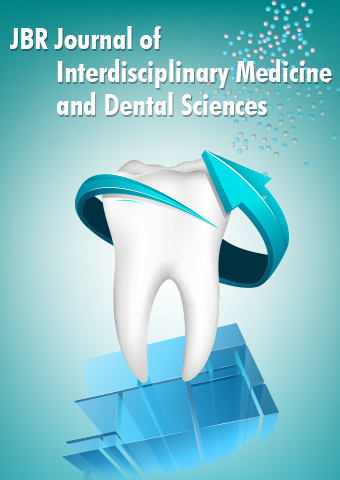Short Communication - JBR Journal of Interdisciplinary Medicine and Dental Sciences (2020) Volume 3, Issue 3
Oral Rehabilitation of resection cases with Cortico-Basal implantology
Vivek Gaur
Fetal Medicine Consultant at Cloudnine Group of Hospitals, Maharashtra, India
Abstract
Osseous Reconstruction of the oral cavity defects is a challenge to the field of maxillofacial surgery in both physiological and pathological conditions to bring back the near normal esthetics and functions for the patients. For physiologically atrophic jaws reconstructive procedures are well described in literature to obtain required stability for prosthetic rehabilitation, procedures such as micro-vascular surgeries and osseous grafting techniques are well described for pathological defects. These procedures are practiced with good success in achieving the aesthesis for the patient but fail to full fill the functional aspects.
Role of conventional implants is questionable in these cases due to the viability of osseointegration to cancellous bone availability and peri implant bone loss were as a CORTICO-BASAL IMPLANTS / STRATEGIC IMPLANTS® utilizes the cortex of the reconstructed bone or the natural bone to achieve immediate functional loading of the implants without any per implantitis .The presentation consist of couple of cases which are treated by CORTICO-BASAL IMPLANTS / STRATEGIC IMPLANTS® with minimal or no complication in oral prosthetic rehabilitation achieving both functional aspects as well as esthetics.When the topic atrophy is discussed its not only the deficient available cancellous bone three dimensionally but the complete absence of the alveolar / cancellous bone and some corticals like the crestal cortical , buccal cortical , palatal cortical , lingual cortical nasal cortical or all of maxillary and mandibular corticals in resection cases being of maxillectomy and mandibulectomy, partial or complete .
There is always reconstruction possible and done successfully with various osseous and myocutaneous grafts or in combination but the procedure having its own limitation and donor morbidity . Thus an implant design like of “Lag Screw†which are polished surface and has apically masticatory force transmitting threads engaging the available corticals and buttresses which may be maxillary or extra maxillary or the available corticals of the microvascularised autografts is been in use for more then 7 decades , BECES® and ZDI® of Strategic implant® being one of them . The second or third cortical or the extra maxillary corticals and of the autografts are always more stable then the crestal cortical which most of the time is resected or exposed to the unstable oral environment for the foreign body like implants . the conventional / alveolar implantology have its maximum support from the unstable crestal cortical , thus having higher chances of the surface treated crestal part getting exposed to oral environment and getting secondary infected.Biography
Vivek Gaur is a graduate from Manipal University. He completed his PG Certification in advanced Implants from Manipal, India in 2003. Later, he went on to pursue a Diploma in Advanced Implants from Zest, Holland in 2004. He has been trained in Advance Grafting Course from Valladolid – Spain, Immediate Functional Loading Implantology – Milan, Italy and Basal Implants – India, Hungary, Serbia, Bulgaria, Zurich. He has been a keynote speaker in several Cortical Osseointegration Implant Symposiums. He did his Master Clinician Programme in Implants from UCLA, Los Angeles, USA.


